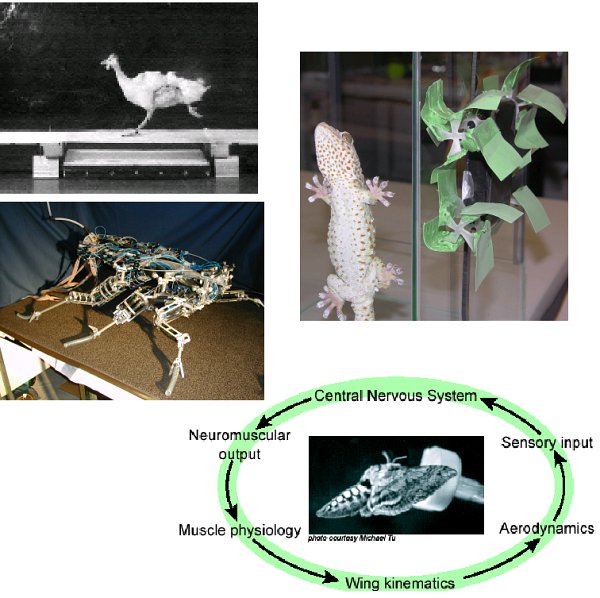Biomechanics and Neuromuscular Control
Symposium organized by
Kiisa Nishikawa and Andrew Biewener
How do animals achieve the remarkably impressive performance they display when feeding and moving? Such ability reflects robust mechanisms for the control of motor function. It is becoming increasingly clear that, in order to understand the neural control of movement, an understanding the biomechanics of the controlled structures is required. Neural control of movement is thus an interdisciplinary endeavor that requires integration among the fields of neuroscience, muscle physiology, computer science and bioengineering. Speakers representing these fields will use examples from their research to illustrate how interdisciplinary approaches, including those at the interface of bio-inspired robotics, lead to insights in understanding the neural control of movement. An emergent theme is that the biomechanical design of animal motor systems simplifies the neural control task.

Biomechanics and Neuromuscular Control Symposium Participants/Agenda
- Richard Satterlie, Marine Science Center, University of North Carolina, Wilmington
Changing Locomotor Speed in a Mollusk: From Neurons to Mechanics - Hillel Chiel, Department of Biology, Case Western Reserve University
Neuromechanics of Multifunctionality - Thomas Daniel, Department of Biology, University of Washington
Inverse Problems in Flight Control - Melina Hale, Department of Organismal Biology and Anatomy, University of Chicago
Cells, Circuits and Startles: Examining the Evolution of the Brain and Escape Behaviors in Fishes - T. Richard Nichols, Department of Physiology, Emory University School of Medicine
Differing Roles of Length and Force Feedback in the Regulation of Motor Coordination and Stability - Andrew Biewener, Department of Organismic and Evolutionary Biology, Harvard University
Neuromuscular Dynamics: Passive versus Active Control of Locomotion and Stability - Anna Ahn, Department of Biology, Harvey Mudd College
Translating a Neural Signal into a Mechanical Output - Peter Aerts, Department of Biology, University of Antwerp, Belgium
Locomotor Performance and Strategies in Frogs: A Simple Modeling Approach - Kiisa Nishikawa, Department of Biology, Northern Arizona University
Neuromechanics of Elastic Energy Storage and Recovery during Ballistic Movements - Robert Full, Department of Integrative Biology, University of California at Berkeley
Principles of Neuromechanics: Integration of Experiments, Mathematical Models and Physical-Robotic Models - Roger Quinn, Department of Mechanical and Aerospace Engineering, Case Western Reserve University
Bio-robots as Tools for Understanding Neuromechanical

